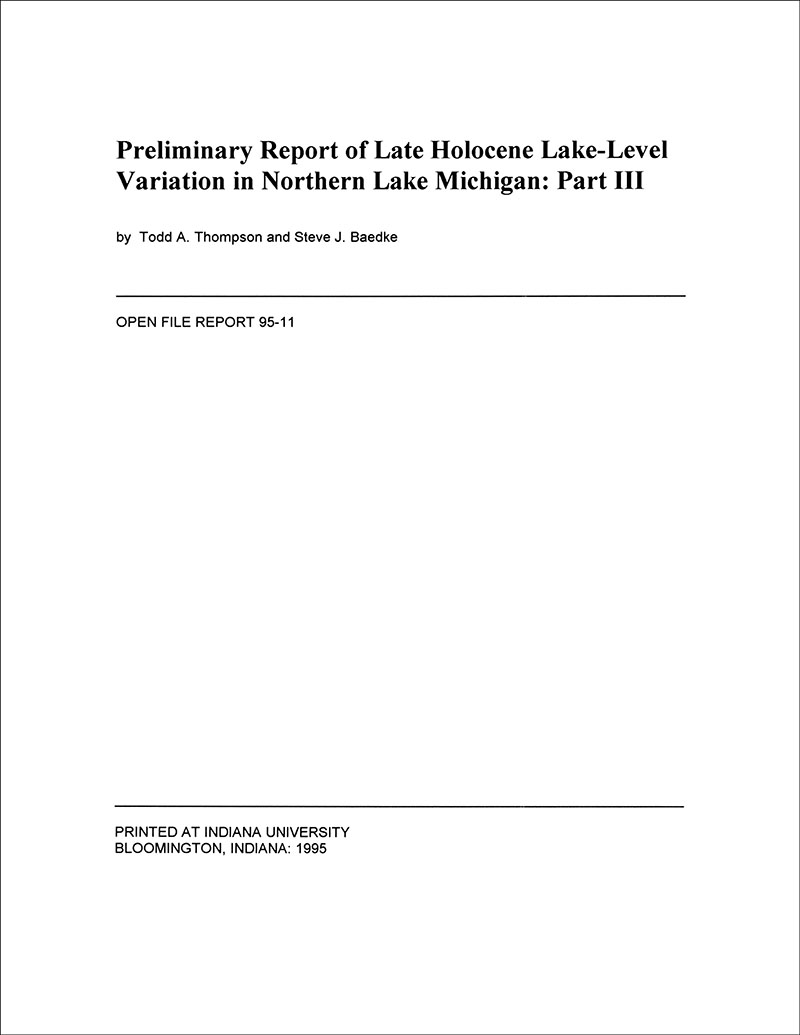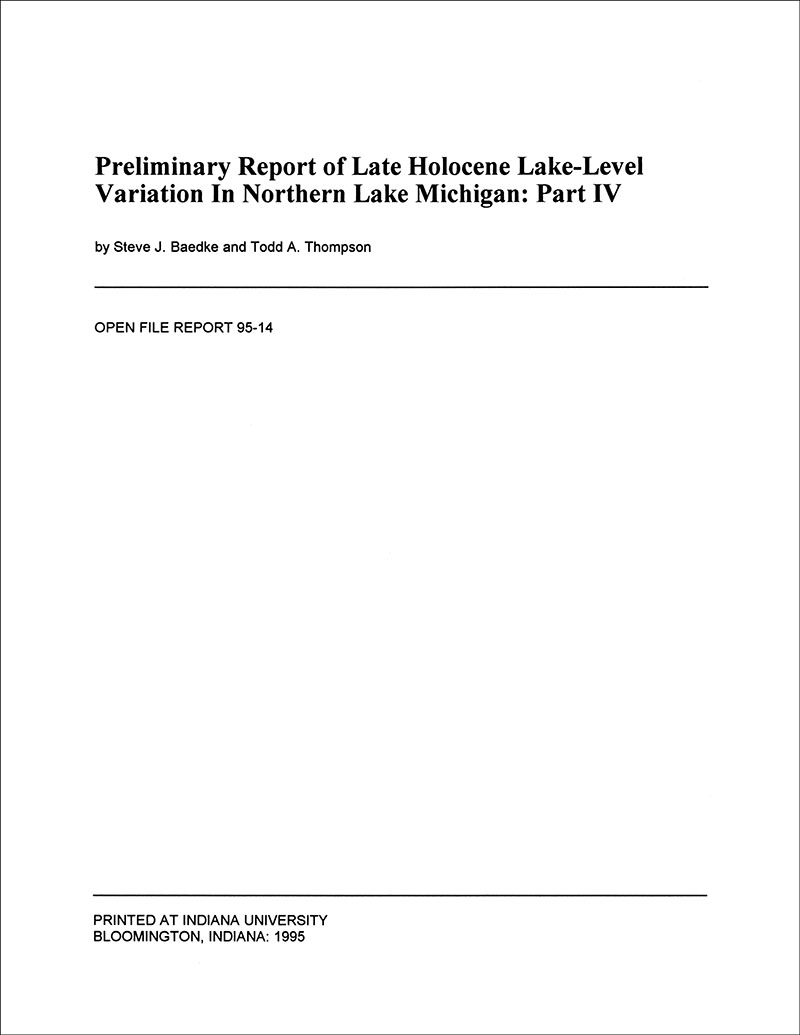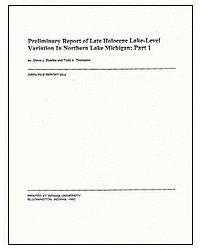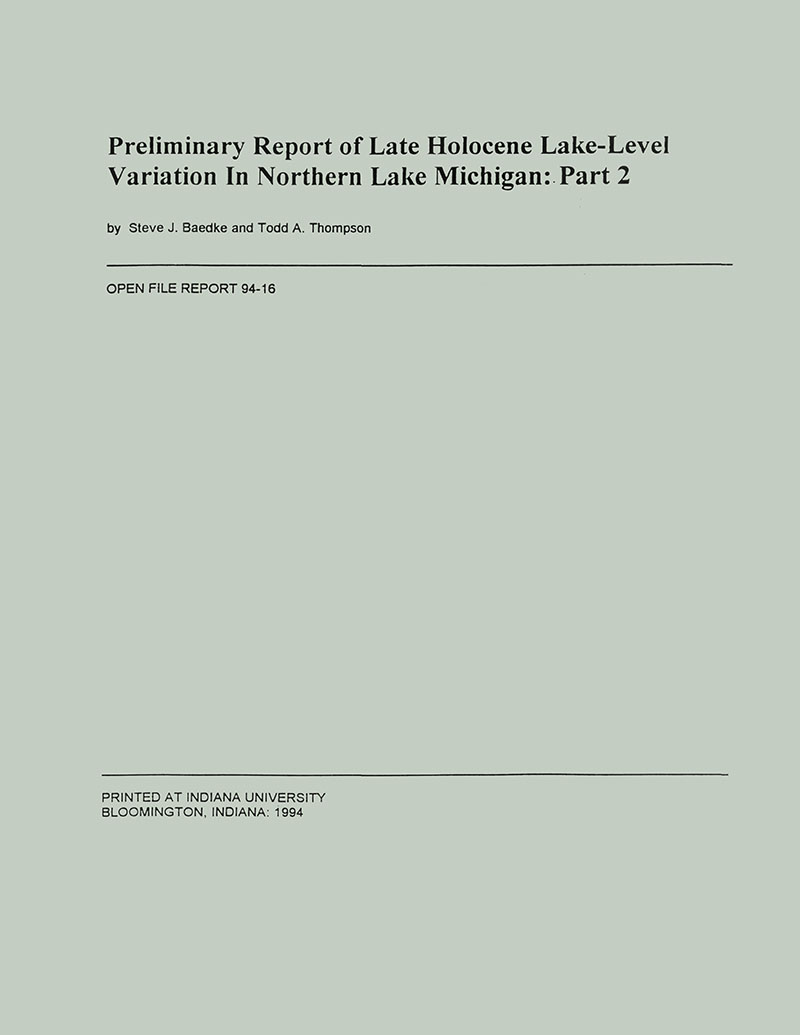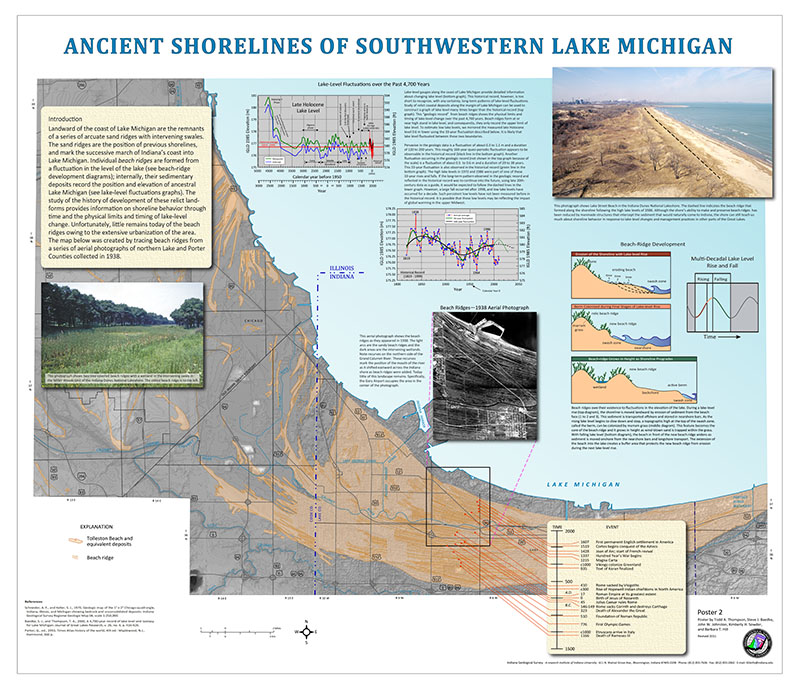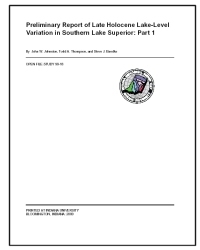ABSTRACT: The internal architecture and timing of development were determined for 38 beach ridges within the Sturgeon Bay embayment of Wilderness State Park, Michigan. Elevations of foreshore sediment were used to determine the relative elevation of Lake Michigan when each ridge formed. To determine the age of ridges and the timing of their development, 12 peat samples were dated from basal wetland sediment between ridges. It is assumed in this study that the age of the base of the wetland is a minimum age of development for the ridge lakeward of it. A least-squares regression was calculated through these dates to reduce the scatter and to assign ages to unsampled wetlands. The age and elevation data ere combined to create a single relative lake-level curve for the Sturgeon Bay embayment. Along the transect in the Sturgeon Bay embayment, ridges formed between 600 and 2,300 calendar years before present (cal. yrs B.P.). The rate of vertical movement due to isostatic adjustment (rebound) for this embayment is greater than any other sites studied. The high rate of vertical movement of the embayment is shown by the lowering in foreshore elevations of about 15 ft. from 1,700 to 600 cal. yrs. B.P. Individual beat ridges formed in the embayment on a long-term average of 36 ñ 9 yrs/ridge. Groups of three to five ridges, showing a rise and fall in basal foreshore elevations within the group, define a longer-term and possibly larger-amplitude quasi-periodic lake-level variation of about 150 years in duration. Over-thickened foreshore deposits occur along the transect. They are interpreted to represent stacked beach ridges. These over-thickened foreshores occur in the landward part of the groups, suggesting that the rate sediment supply was insufficient to offset onshore translation of the shoreline during the 150-year quasi-periodic fluctuations.
Thompson, T. A., Baedke, S. 1995, Preliminary report of Late Holocene lake-level variation in northern Lake Michigan: part 3: Indiana Geological Survey Open-File Study 95-11, 14 p.
Notes: Publications in the Indiana Geological Survey Open-File series have been inconsistently named using a variety of series titles including "Open-File Report," "Open-File Map," and "Open-File Study." Prior to 1994, a publication in this series was generally referred to as an "Open-File Report" (but not always). To help reduce confusion created by these inconsistencies, the IGS now refers to every publication in the Open-File series as an "Open-File Study." To be entirely correct in writing a bibliographic reference for a publication, one should use the series name and number that appears on the publication itself.
You may also like:
Keywords: lake level, Holocene, sedimentology, geologic hazard, Lake Michigan, beach ridge
Can't find what you're looking for? Feel free to contact us directly:
Indiana Geological and Water Survey
1001 E. 10th St.
Bloomington, IN 47405
812-855-7636 (phone)
812-855-2862 (fax)
IGWSinfo@indiana.edu
IGS Return Policy
- Original sales receipt required.
- Returns accepted within 30 days of purchase date.
- Refund will be issued by the same method of payment as purchased.
- Products must be returned in the same new condition as purchased.
- Refunds on custom orders and digital products are NOT allowed.
- Customers are responsible for paying shipping costs to return products.
Updated 8/19/2020



